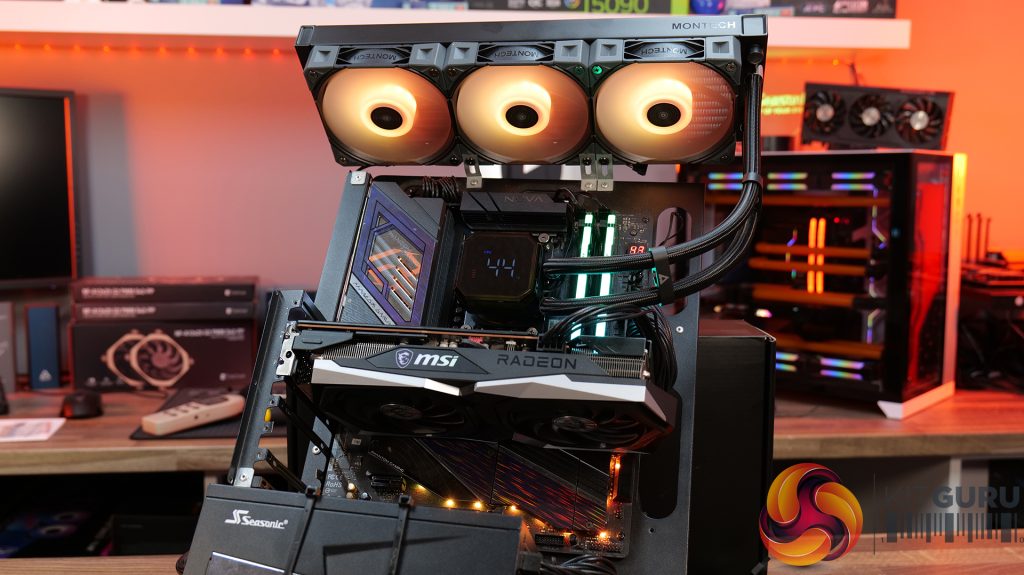
Test System Specifications:
- CPU: AMD Ryzen 9 9950X
- Motherboard: ASRock Phantom Gaming X870E Nova WiFi
- Memory: 32GB (2 x 16GB Modules) Kingston Fury DDR5-6000
- Graphics card: MSI Radeon RX 6600 XT Gaming X
- Storage: 1TB Corsair MP600 Elite PCIe Gen4x4 NVME M.2 SSD
- Power Supply: Seasonic Prime TX-1600
- Chassis: Open Test Bench
- Thermal Compound: Arctic MX-6
- O/S: Windows 11 Version 24H2
Testing Methodology:
We are primarily focusing on the performance of each cooler at 100% fan speed and also when locked to 40dBA noise output. We will focus on cooling performance using a manual overclock with all-core frequency and VCORE locked to 5.2GHz/1.3V (AMD) and 5.5GHz/1.3V (Intel) and Precision Boost Overdrive performance.
- The test data is logged using HWINFO and the final 10 minutes of the data is calculated to find the average CPU temperature and CPU clock multiplier (AMD PBO Test) and then plotted in the charts.
- For testing, we use a 30-minute looped run of Cinebench R23 and record the steady-state CPU temperature at the end of the test. This ensures that the CPU has had ample time to warm up and reach a steady state under all of the coolers.
- The ambient is maintained at 19-21 degrees Celsius. Where there is variation beyond this temperature range, we add extra repeated tests to ensure consistency. However, this is well controlled now with A/C.
- We also test each cooler with at least two fresh installs (typically three) to mitigate the likelihood of poor mounting spoiling results.
- Ambient temperature and humidity are controlled via a mini split air conditioning system inside the test room. Ambient temperature is maintained between 19-20°C; temperature delta figures are shown in the charts (ambient temperature is deducted from the measured component temperature).
Test Results:
Acoustics
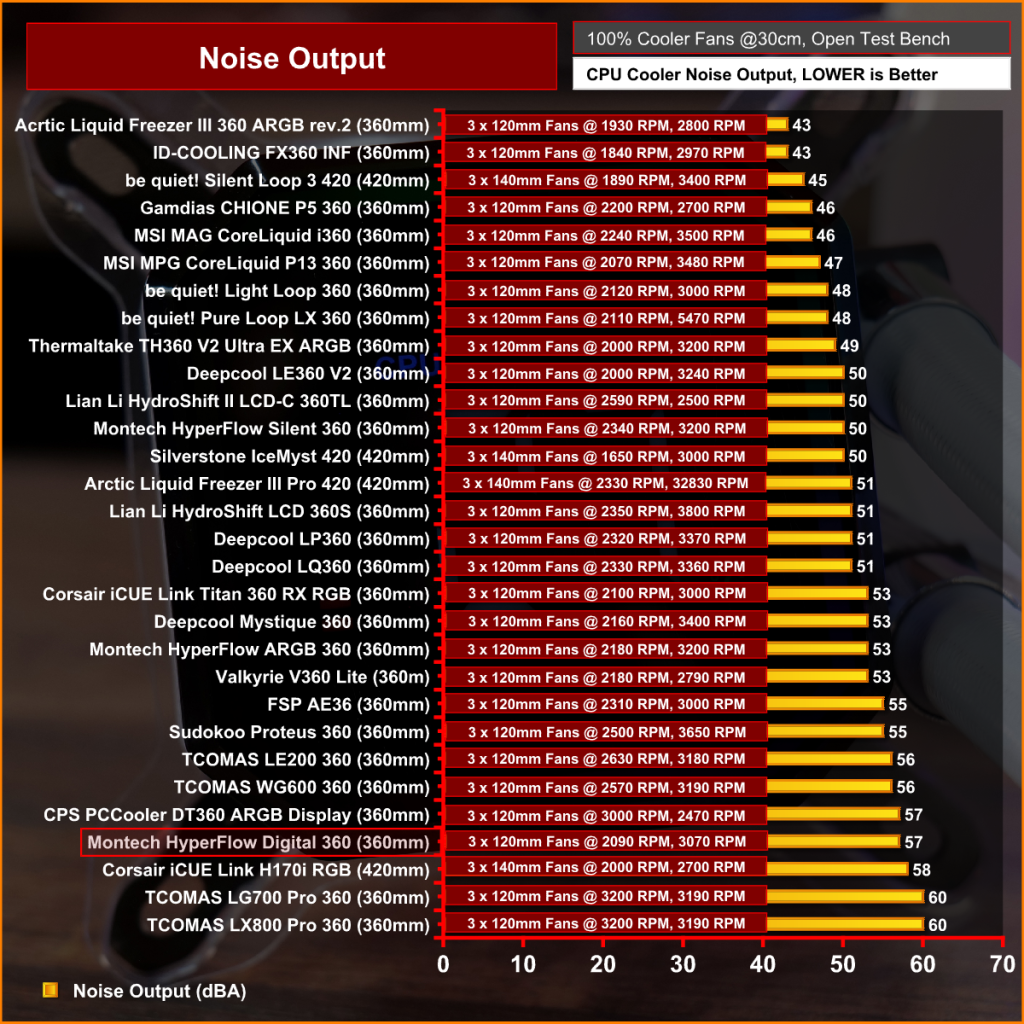
We’ll start by looking at noise output, as it provides a strong indication of overall performance.
The 360mm HyperFlow Digital is exceptionally loud at maximum fan speed, producing a recorded peak noise level of 57 dBA. This places it near the bottom of our charts and makes it quite distracting to use at full speed. To achieve a more comfortable balance between noise and cooling performance, users will need to fine-tune the fan curve.
Thermal Performance: AMD Ryzen 9 9950X
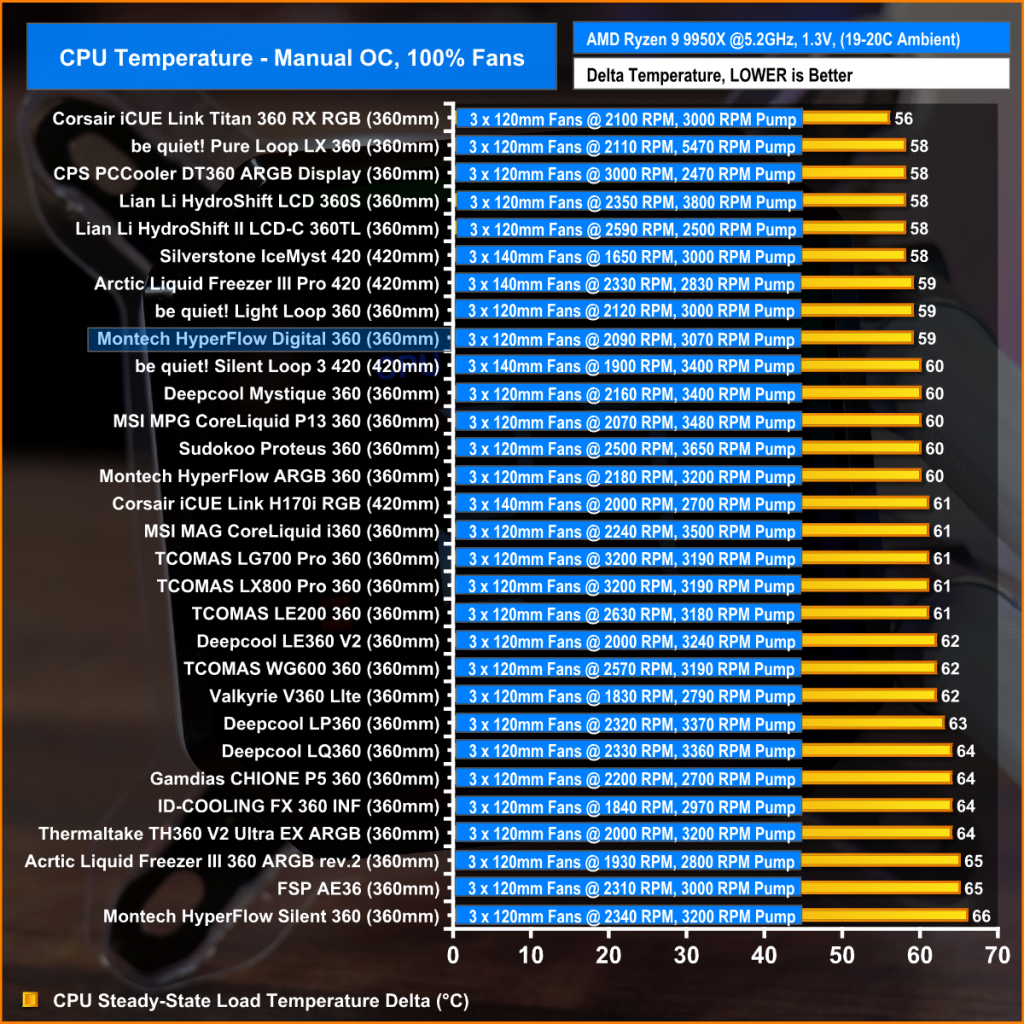
At maximum fan speed, the HyperFlow Digital delivers solid thermal performance, with an average recorded CPU temperature of 59°C. This result places it among the top-performing coolers in our testing. However, it achieves this at the cost of significantly higher noise levels compared to similarly performing coolers such as the Arctic Liquid Freezer III Pro 420 and the be quiet! Light Loop 360.
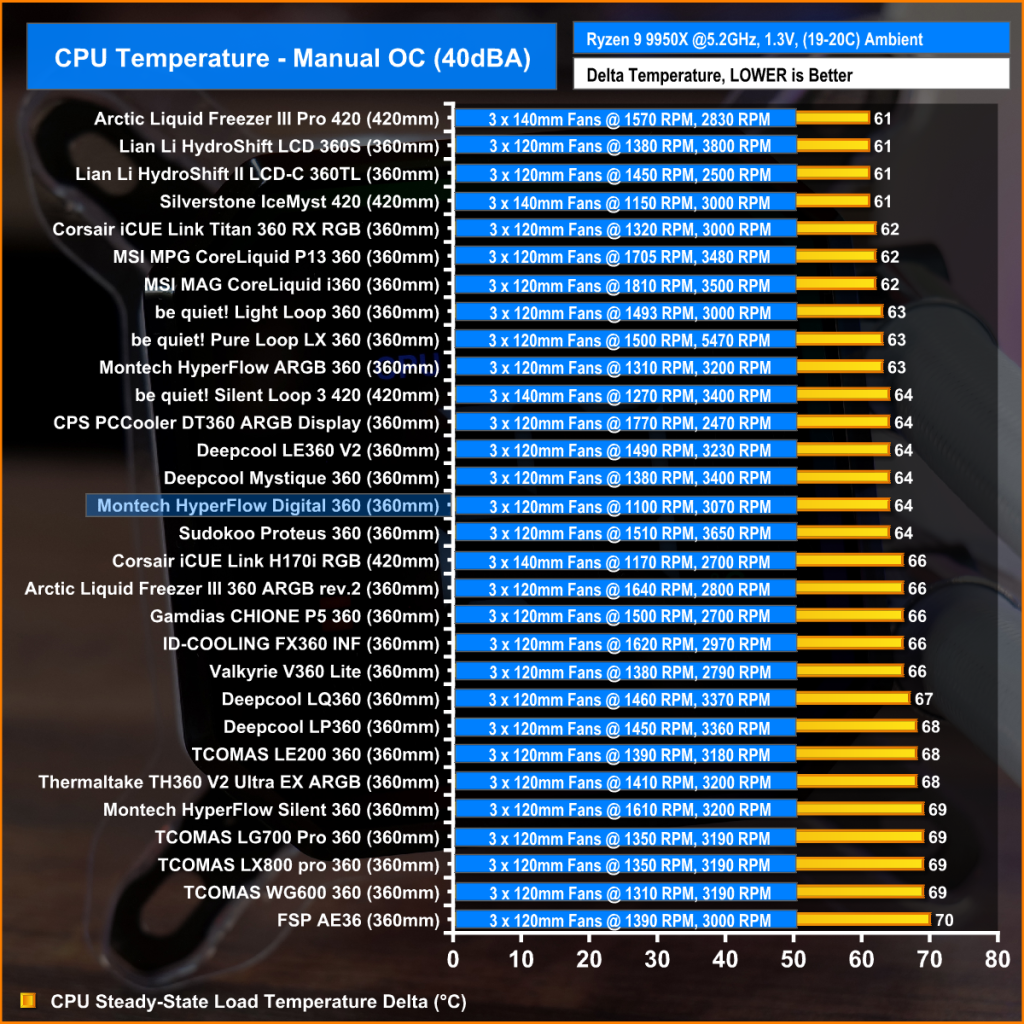
Reducing fan speed to meet the 40 dBA noise target requires lowering the PWM duty cycle by almost 50%, resulting in a fan speed of just over 1000 RPM.
This adjustment has a noticeable impact on thermal performance, raising the average temperature to 64°C. Even so, it remains competitive with other budget AIOs, including those from DeepCool, and still offers sufficient cooling capacity for high-performance CPUs such as the Ryzen 9 9950X.
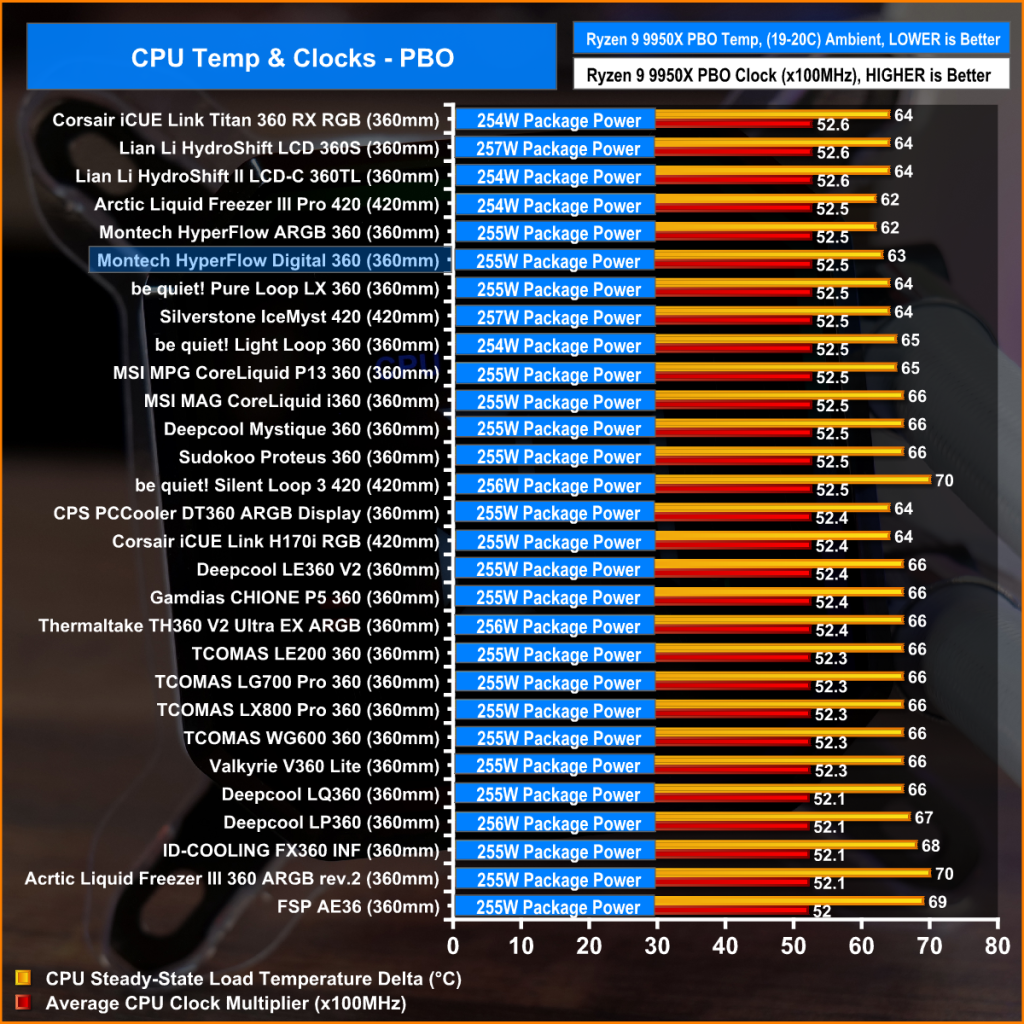
In the Precision Boost Overdrive (PBO) test, CPU frequency is automatically adjusted based on a target temperature, so the temperature differences between coolers are relatively small. In this scenario, the key metric is the clock multiplier.
With the test running at maximum fan speed, the HyperFlow Digital performs admirably, maintaining an average clock multiplier of 52.5 while handling a 255W power package. This puts it on par with several larger 420mm coolers, though it remains considerably louder than many of them.
 KitGuru KitGuru.net – Tech News | Hardware News | Hardware Reviews | IOS | Mobile | Gaming | Graphics Cards
KitGuru KitGuru.net – Tech News | Hardware News | Hardware Reviews | IOS | Mobile | Gaming | Graphics Cards


